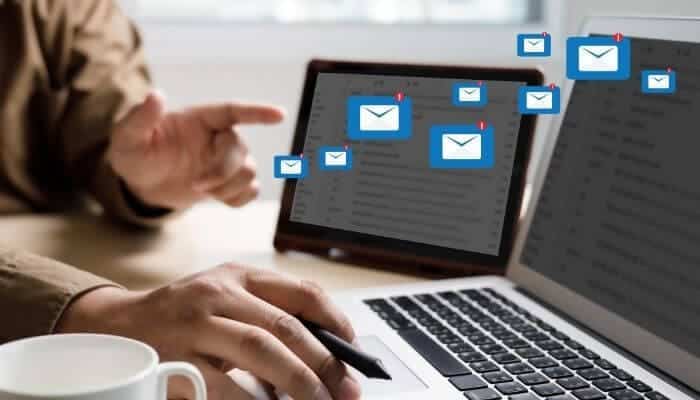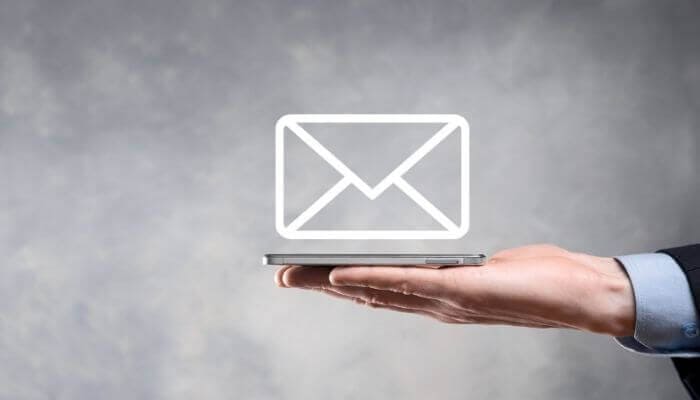
Brian Minick Talks Email Database Hygiene with eSputnik
Brian Minick, COO of ZeroBounce, presented a comprehensive webinar on email database hygiene with eSputnik, an omnichannel marketing automation service. Didn’t get a chance to see the livestream? Check out the summary and video below.
I’ve watched and heard Brian Minick speak several times. He’s a wealth of information and tips on all things related to email list help and deliverability. These aspects of email marketing can feel overwhelming, especially if you’re a beginner. Brian has a special gift: he can make them easy to understand.
Whether you caught the webinar and would like to brush up on it or if you didn’t catch it “live,” you’re in the right spot.
I’ll be going over some of the most important concepts in email database hygiene, which Brian explained in this in-depth presentation.
Email database hygiene leads to good deliverability
Of course, it stands to reason that email marketers want to land in the inbox. The industry calls this deliverability. But did you know that landing in the inbox isn’t necessarily a given?
You can imagine email deliverability as a measure of success. Your emails landing in the spam folder is indicative of not practicing email list hygiene. Consequences of using a messy list aren’t just that your emails may not be seen, as if that wasn’t bad enough. It also means:
- a lower ROI,
- an increased risk of blacklisting, and
- other subscribers never seeing future emails.
“Landing in the inbox is the ultimate key to a successful marketing campaign,” Brian says.
It’s also a byproduct of good email database hygiene.
Email database hygiene: The questions you should be asking
Just as motorists should be aware of regular maintenance of their car, or we practice good oral hygiene to keep our teeth and gums healthy, your email database relies on maintenance and hygiene.
Brian shares a number of questions to ask that will determine whether your deliverability is good or slipping.
He goes on to list them below.
“What is the reputation that you have with all of the mail servers and spam filters?”
This means not only in your country or region, but across the world. Brian points out that “the mail servers are getting smarter and smarter.” A big part of email deliverability is ensuring that you have a good sender reputation.
“Are you checking to see if you are on any blacklists?”
Email servers use blacklists to put a damper on the massive amounts of spam out there. Not being aware of this could be the reason some people aren’t getting the emails you send. It’s another side effect of poor email database hygiene.
“Have you ever checked the reputation of your domain?”
A good blacklist monitor should be able to find out if your domain has been blacklisted. Not being aware of this is like thinking you don’t have a cavity just because you don’t go to the dentist.
“Have you checked the IP address that the sending domain is on?”
This, too, could get on a blacklist. It’s imperative to know that you’re sending from an IP address that has a good reputation.
What do you do if you are on a blacklist?
One of the focuses of your overall email marketing plan should be in getting off of those lists. But how do you know you’re blacklisted?
At ZeroBounce, we launched a blacklist monitoring tool that alerts you if your IP or domain have been blacklisted. Furthermore, we give you all the contact information you need to you can get in touch with the blacklist provider about getting off the list.

Email deliverability: Other things to think about
Paying attention to your email database hygiene, monitoring your IP and domain status and your reputation – these aspects have a crucial impact on your deliverability.
However, landing your emails in the inbox entails more than that. In his eSputnik presentation, Brian went over a few more things to keep in mind.
How much and how often you email
It’s good to pay attention to the numbers of emails that you’re sending. Also, the frequency that you’re sending.
Brian calls this “warming up your domain and your mail server.” For instance, if you’re a new sender and want to send out a million messages today, that’s a bad idea.
“There are warm-up schedules that you can follow to warm-up in a smart way.” That prevents you from taking inbox providers by surprise and causing your campaigns to land in the junk folder.
Read more about warming up your IP in our email deliverability guide.
Cadence is critical for email database health
Great businesses thrive when they keep a regular schedule. Things you see as needing to take place “sometimes,” suffer from the “when we get around to it” mentality, which starts to mean almost never.
Cadence, or sending emails on a schedule, is very important to the health of an email database. It helps your subscribers anticipate your newsletters or promotions and furthermore, can prevent you from being regarded as a spammer.
“Are you always sending on a Tuesday at 9:00 AM? If so, that’s great. It’s what the mail servers are used to now. They are used to seeing your emails at 9:00 AM on Tuesday,” our COO Brian Minick explains.
So, make a sending plan. Stick with it and if you need to increase email sending volume, do so slowly. The other side of that is to not disappear. You should keep your email address “warm” by sending a minimum of once a month.

Email database hygiene means scrubbing your list
“Clean your data before you do anything with it,” Brian advises.
There are few things in life that immediately improve with a good cleaning. Your email list is no exception. Scrubbing your list is the biggest component of email database hygiene. Without it, you have no protection from encroaching bad data.
How often do you have to scrub your list?
Every industry is different and different lists have different criteria.
Brian explains:
“If you’re sending to business emails, you probably want to validate at least every three to four months. If you’ve never done it, you want to run the whole list. Every three-four months is good for someone who is passionate about deliverability. On an ongoing basis, every six to nine months may be okay for some.”
The other thing to keep in mind is that “if you’re obtaining new data, you need to do it every time you get that data.”
Think of it like this. Imagine you cleaned your pool. Would you want to add dirty water to the clean pool?
What types of email validation can you use?
There are two ways to validate your list and keep it in good shape: in bulk and in real time.
Cleaning your list in bulk
Especially if you’ve never validated your list, bulk verification is the most common first go-to in getting on the right track.
A very popular way of doing this is to go on the site platform and upload your list. This doesn’t take long. For instance, ZeroBounce takes 45 minutes to verify 100,000 contacts.
Once the system identifies invalid or potentially risky emails, you can keep only fresh, real contacts in your list.
“ZeroBounce offers a free account to check 100 email addresses per month,” Brian says. “Also, you can use our bulk email verification API and easily upload your files there.”
Verifying emails in real time
If you’ve been maintaining good email database hygiene, it’s important to protect that information.
“So, if you have a sign-up form, you can put the validation piece right on your contact form. If the address added is invalid, it can be blocked. What’s more, a real-time validator can catch a typo”, Brian says.
The ZeroBounce email validation API will suggest the user a correction so they can share a valid contact in the form.
Brian points out that the benefit of using a real-time verifier is that “you collect only good data.”
Starting with a good list
Of course, if you’re just starting out it’s a great idea to start out smartly. The healthiest list grows naturally, and by using a double opt-in sign up. Brian says “that is the best contact you can get.”
(This means that buying email lists is out of the question.)
Using a double opt-in also means that there is a little bit of effort on behalf of the would-be subscriber. After signing up, an email arrives in their inbox. There is a link to confirm that the recipient really wishes to sign-up. This confirms that there is an interest and that someone else didn’t sign someone up without permission.
A good list is full of people who want to be there. They haven’t arrived on a whim, but rather are genuinely interested in getting the promotions.

Mailing list hygiene means getting rid of risky contacts
There has never been a time that it’s more important to remove risky and invalid contacts. 2020 and 2021 saw a great increase in previously active email addresses becoming deactivated or abandoned.
“What we are seeing today, especially in the B2B world, with everything that has happened with this pandemic, emails are churning. By churning I mean they’re no longer active,” Brian warns.
So what happens when you send an email to one of those inactive addresses?
“Those are going to result in a bounce and that’s going to ultimately hurt your reputation.”
There are a number of bad contacts you should remove from your email list. Here are a few of them.
Invalid email addresses
Invalid addresses you want to remove. They don’t even exist. Since they’ll bounce, what’s the point of keeping them on your list? You wouldn’t call a phone number that was disconnected. Only the consequences are even worse for emailing invalids: bounces hurt your sender reputation.
Email service providers also charge based on how many addresses are on your list. It’s a waste of resources to keep any non-productive emails on your list.
This brings us to a very good point, which Brian simply explained:
“Your email list is about quality, not quantity.”
Brian points out that it’s not just invalid emails. What’s “crucial is removing emails that are risky.” You may have contacts on your list that don’t bounce, but are still damaging to your email hygiene.
Let’s see what those are!
Spam traps
“If you send an email to it, it will immediately blacklist you. The only reason you have that email address is that it was probably scraped off the web. The email servers and the spam filters do this on purpose. They’re setting traps because they want to reduce spam in their customers’ inboxes.”
Spam traps are insidious and a good email validation service should be able to root them out.
Abuse emails
“It is really detrimental when people mark you as spam,” Brian remarked. \
There are certain email addresses that belong to habitual complainers. These are people who commonly mark emails as spam – even those they signed up for.
Whether it’s laziness or maliciousness, you don’t want them on your list at all. You don’t want them on your list in the first place!
Disposable email addresses
Disposable email addresses are frequently called “burners” or “temporary emails.” They’re not meant to last. Brain Minick helps us understand fully why they hurt your email database hygiene:
“They exist from 15 minutes to maybe 24 hours. People don’t want to share their information all the time. You’re going to want to get rid of them.”
If you try to send newsletters to a disposable, you’ll get a bounce. Don’t keep those on your list as they don’t belong.
Role-based email addresses
You know those emails that start with hello@ sales@ info@? Those tend to be inboxes that a great number of people check.
“If you have an email address that goes to 12 people, that’s how many chances it has to be marked as spam. Those are not ratios that work in your favor. They are potentially risky. Removing risks brings the most value out of your campaigns.”
Catch-all email addresses
Catch-all emails can look just like any other email address and that’s why you need an email verifier to find them in your email database.
“These are also known as accept-alls, but they are risky emails and about 40% end up bouncing. It goes back to odds, and not all of them are bad. “There are good emails in there, but how do you find them?”
This is where Brian has a lot of expertise.
“ZeroBounce is the only company that’s taking steps to recover good catch-all emails.
How? We’ve come up with a scoring system that seeks activity on those email addresses. We do this by rating them. You may be able to recover about a third of catch-alls that are rated as 9’s and 10’s.”

If I remove all of these bad email addresses, won’t that be a hit to my list?
It can be easy to become apprehensive about removing so many addresses from your email database, but it’s important to keep in mind that hygiene only helps your list.
“You may lose 20-50% of your list and that may break your heart. However, the focus that you want to keep in mind is quality. Quality, quality, quality! Less is more!”, Brian says.
The question to ask yourself is what good is it to have an email list full of bad contacts? Getting rid of bad data means that your engagement increases.
“If 40% of your emails are getting opened, this tells the mail servers that people want your email. What does that do? It starts to build your reputation. Engagement creates momentum.”
ZeroBounce Score: investigating activity on your contacts
One of the email database hygiene tools that few validation companies have is a scoring system. Brian described the proprietary system that ZeroBounce built and how it allows you to look at the quality of all addresses on a rating system.
“ZeroBounce Score provides a result from zero to ten. Zero is a lack of confidence. 10 is the highest confidence that we can deliver the email. You should segment 7’s and 8’s tand send a separate campaign. Do so with caution.”
ZeroBounce Score is an efficient catch-all validator. Try it today to see how it works!

The ZeroBounce deliverability toolkit
ZeroBounce has a variety of tools that can help your email database in the pursuit of good hygiene. Also, they are your allies in supporting healthy inbox placement.
Brian described the tools during the presentation.
Blacklist monitoring
Ending up on a blacklist can really derail your email marketing program. But how would you know?
ZeroBounce has a blacklist monitor that will let you know if you appear on a blacklist. Once you identify that this is going on, you can contact the blacklist provider about taking you off the list. ZeroBounce Monitor runs daily checks against more than 200 email blacklists.
Inbox placement testing
What if there was a way to test how many of the emails would reach the inbox?
That’s what the inbox placement test does. “This is going to help you understand how good your reputation is,” Brian explains. It tells you whether it will land in the inbox, spam folder or goes missing in action.
Email server testing
There is a lot that goes into sending emails, more than meets the eye. Are you sure your server is set up correctly to allow for good deliverability?
The email server tester is easy to use and if you get stuck, there’s always someone at ZeroBounce that can help you. Brian explains how it works:
“We’ll provide you with a unique email. You can send an email to it from your email service provider. When we receive it, we process it by checking your email for configurations. How is your email setup? Is the mail server set up correctly?”
In the end, quality is king
It may seem counterintuitive that in most cases the key to email database hygiene is taking away addresses. Brian says “focus on quality and not quantity.” It’s what to keep in mind.
You’re trimming the fat and allowing the engaged subscribers the opportunity of reading your emails. Unproductive or disinterested subscribers? We get rid of them.
Constantly improving the quality of not only the emails you send, but the quality of the database you send them to, is the surefire way to send emails that see engagement. By focusing on quality, your list should grow and your returns should increase.
P.S. We thank our friends at eSputnik for the opportunity of this webinar.
Table of Contents
- Email database hygiene leads to good deliverability
- Email database hygiene: The questions you should be asking
- “What is the reputation that you have with all of the mail servers and spam filters?”
- “Are you checking to see if you are on any blacklists?”
- “Have you ever checked the reputation of your domain?”
- “Have you checked the IP address that the sending domain is on?”
- What do you do if you are on a blacklist?
- Email deliverability: Other things to think about
- How much and how often you email
- Cadence is critical for email database health
- Email database hygiene means scrubbing your list
- How often do you have to scrub your list?
- What types of email validation can you use?
- Starting with a good list
- Mailing list hygiene means getting rid of risky contacts
- If I remove all of these bad email addresses, won’t that be a hit to my list?
- ZeroBounce Score: investigating activity on your contacts
- The ZeroBounce deliverability toolkit
- In the end, quality is king






